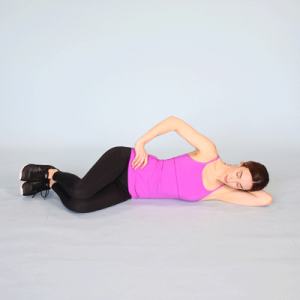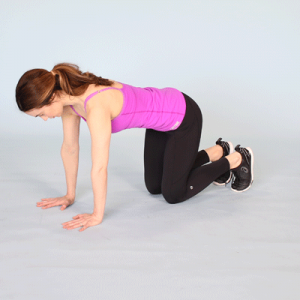The femur doesn't go stright into the hip socket. The femur has an angle to it at the hip joint. So when we internally rotate the femur there is and added adduction movement. As well as when we externally rotate the femur there is and added abduction movement. When you see the knees adducting or abducting that is the femur rotating in the hip socket.
Hey - you're making stuff up now... the fact that the femur is attached to the hip via a ball and socket joint, it doesn't mean that it's "femur rotation" no matter how you move! If you attach a stick to the ceiling in whatever way you want, it doesn't mean the "stick is rotating" when you push it from side to side...
Here's femur rotation vs adduction/abduction:
Note how femur rotation moves the feet side to side with a flexed knee, while the knee stays in one place!
Again Razie you are wrong. The movement you are describing, while it includes adduction, comes from femur rotation. The femur doesn't go stright into the hip socket. The femur has an angle to it at the hip joint. So when we internally rotate the femur there is and added adduction movement. As well as when we externally rotate the femur there is and added abduction movement. When you see the knees adducting or abducting that is the femur rotating in the hip socket.
Actually no, I'm not wrong - the example I gave was specifically femur adduction/abduction, as in:
The rotation is minimal, because we keep the feet in one place, as opposed to a simple long legged adduction/abduction:
Without adduction/abduction, you can't keep the feet in one place... evident when compared to a simple femur rotation, which would be:
Please reference only normal human biomechanics. If you want to define your own alternative biomechanics where everything we do is a result of a single movement aptly named "femur rotation", just please label it as such!

The exercise I gave demonstrates that the main movement is adduction/abduction and that the rotation is minimal and passive, induced be the knee joint from keeping the feet in one place. The only
active movement one makes is adduction/abduction, in that exercise, i.e.
moving the knee side to side while sitting on a chair. It doesn't get simpler than that...




